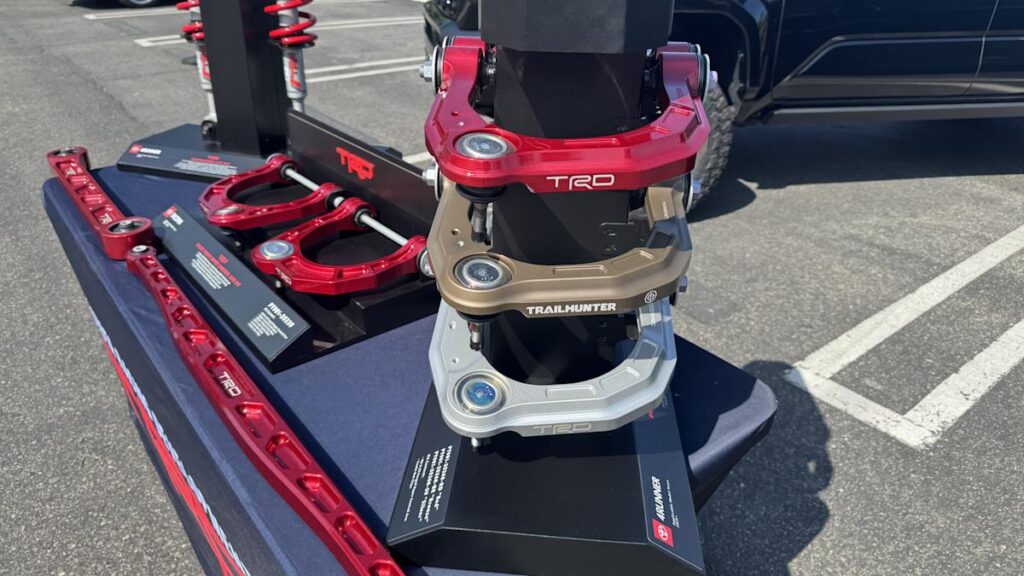Toyota sells more cars than any other auto manufacturer on the planet. It shipped 11.2 million cars in 2023, so naturally there are lots of different arms of the company and sub-brands. Though the majority of Toyota vehicles on the road are not particularly exciting ones, like Camrys and Corollas, some of the most exciting cars that come from the Japanese automotive giant bear the letters TRD in their name (or GR, of course).
The first Toyota Racing Development U.S.A. facility was opened in Costa Mesa, California in the early 1980s, and it’s still in operation today. The facility primarily handles manufacturing for Toyota’s NASCAR program, but it also contributes to many of the company’s other racing endeavors including Formula Drift, GR Corolla TC, GR86 Cup, GT4, NHRA Funny Car, and more. Toyota invited me to visit its Costa Mesa TRD facility on Tuesday, where I learned that not only was the upper control arm on new TRD Pro models was not only designed there, but they’re also manufactured right alongside all of Toyota’s NASCAR engines in California.
Read more: The Best-Looking Pickup Trucks Ever Sold, According To Our Readers
Toyota invited me to tour its TRD facility on National Taco Day
A photo of the lobby of the TRD facility in Costa Mesa showing six engines mounted to the wall – Logan K. Carter / Jalopnik
Toyota is known for producing exceptionally well-engineered and reliable vehicles, and the same effort that goes into its production cars goes into its race programs, too. I was invited to visit the TRD facility on National Taco Day where I was fed free tacos while surrounded by an array of Tacoma TRD Pros, but I was much more excited about the tour than the tacos.
When you walk into the lobby, there’s a row of racing engines mounted to the wall to let you know that you’re in for something special. Behind closed doors, we got a special peek at some of the facility’s many advanced technologies and processes, including the electron microscope that metallurgists use to analyze components that fail in testing or in racing, and elaborate dynamometer setups used to stress test NASCAR engines. Those dynos are completely climate controlled, and can simulate different barometric pressures and humidity levels depending on where the races take place, just to give you insight into how precise TRD’s operation is.
Production parts are manufactured alongside racecar parts

A close-up of a TRD Pro aluminum upper control arm being milled at the TRD facility showing a mill spraying liquid where it works – Logan K. Carter / Jalopnik
The TRD engineers gave us a surface-level explanation of the challenges they faced in developing the red coating for the Tacoma TRD Pro’s billet aluminum front upper control arms, including tests to ensure the coating won’t fade, rust, corrode, or otherwise degrade for a long time, regardless of how much torture they face in the form of rocks, potential chemical exposure, and gravel. In fact, the technology developed at TRD U.S.A. to coat the upper control arms is a totally new technology that Toyota Motor North America has never used before.
Naturally we were limited on what we could photograph and were only told a very limited amount about such a new and noteworthy technology, so I can’t tell you much more than that. I can tell you that the TRD Pro billet aluminum upper control arms are manufactured mere feet away from machines milling massive NASCAR engines, though. Between its Costa Mesa, California and Irvine, California manufacturing facilities, TRD U.S.A. produces all the billet upper control arms for every Tacoma, Tundra, and 4Runner TRD Pro sold.

Logan K. Carter

Logan K. Carter
Want more like this? Join the Jalopnik newsletter to get the latest auto news sent straight to your inbox…
Read the original article on Jalopnik.

